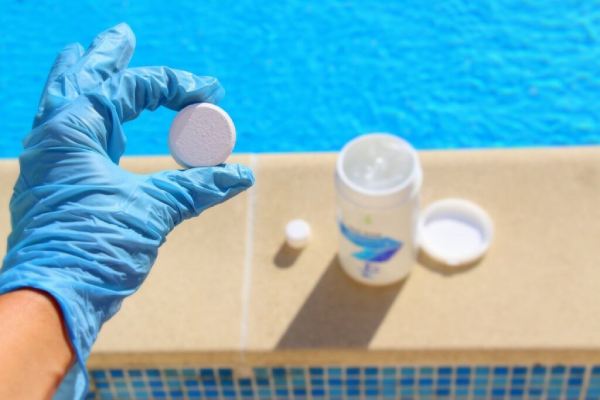The Reason Why Drinking Fountains Have Splash Guards
When you think of drinking fountains, the image that comes to your mind is often a simple fixture with a water spout, inviting people to quench their thirst. However, upon closer inspection, you may have noticed a small yet essential feature called the splash guard.
You may be wondering, Why do drinking fountains have splash guards? Well, despite the fact that splash guards are almost insignificant, they have a crucial function in providing people with a safe and pleasurable drinking experience.
In this blog post, we will explore the relevance of splash guards in public drinking fountains, the reasons why they are installed, the history of water fountains, and lots more. But before that, let’s get to know what splash guards are.
What is a Splash Guard?
A splash guard is a protective device installed on public drinking fountains to reduce splashing and improve hygiene and efficiency. Water fountain splash guards are often small barriers or shields positioned in a strategic location around the water spout or nozzle.
The splash guard helps keep people from getting wet when they turn on the drinking fountain by directing the water flow down and away from the spout. This lessens the likelihood that water will pour out onto the ground, where it could cause slips and falls.
Public water fountains with splash guards tend to have lower levels of bacteria and other contaminants. You know, the less splashing occurs, the less likely it is that the fountain’s water supply will become contaminated by dirt, trash, or bacteria.
In addition, they aid in keeping people from accidentally putting their mouths too close to the water source.
Fathom the need
Now you may be thinking, Why exactly is a splash guard necessary? Well, in this section, we will make you understand the need for a splash guard, so keep reading.
Have you ever considered how fortunate you are to have lifeguards watching over you at all times in public pools? The truth is, having trained experts around you in a pool, especially when you aren’t good at swimming, is always a fantastic experience.
But why haven’t you considered having trained individuals for the purpose of protecting your mouths from the unwanted saliva of others? Is your oral hygiene not as important as your ability to survive in a swimming pool?
The truth is, we most often forget the importance of oral hygiene. The mouth is a multipurpose organ that allows us to speak, chew, and breathe. One person putting their mouth in a public fountain spigot might potentially spread germs to many others.
Just consider all the bacteria and dangers that exist, and you will realize that neglecting your oral hygiene could have major effects on your health.
Now, you are beginning to see the need for splash guards. However, before we go further, let’s quickly look at the effects of not having a splash guard in a public drinking fountain.
Unlimited diseases
It’s a known fact that drinking fountains are frequently used by many people at different times of the day. A possible source of contamination is created when people drink from the spout.
A splash guard is very crucial in public drinking fountains. This is because there are millions of bacteria colonies around. The splash guard creates a barrier between the spout and your mouth, keeping the two separate.
This little feature significantly reduces the likelihood of you attracting a variety of infectious diseases, such as the cold, flu, or another virus.
Water fountains are sometimes vulnerable to contamination from the environment or from unclean water sources. Droplets of water may easily splash back into the basin of the fountain or onto the surface of the spout if splash guards aren’t installed.
Users who don’t know better may contract waterborne diseases including giardiasis, cryptosporidiosis, or even cholera by drinking from the fountain.
However, a splash guard serves as a barrier, halting the return of potentially dangerous contaminants to the water supply.
What is the Reason for Mouth Guard?
You can practice greater hygiene and lessen the likelihood of spreading germs or sickness by using a mouth guard while drinking from a fountain. Mouth guards usually have a curved shape, making it more difficult to put the mouth directly on the spout.
If you wear a mouthguard, you can drink from the fountain without worrying about contaminating your mouth with germs from other people. This is very useful in public areas with shared water fountains, as it reduces the likelihood of cross-contamination and promotes cleaner water fountains.
The history of old water fountain
Public water fountains were first installed in ancient Nepal in the year 550 A.D. These magnificent fountains were carved from stone and were designed to draw water from underground springs.
They weren’t as powerful as some other options, but they were better than having to use rainwater. Surprisingly, some of these historic fountains are still functioning, quenching the thirst of many people.
In the 1800s, a rapidly expanding population and inadequate sewage facilities posed a serious threat to water quality in the United Kingdom.
People used to throw their waste onto the streets, contaminating the water source. Luckily for them, the government stepped in and mandated that private water firms improve water filtration and sewage disposal to put things right.
Because of this, things shifted for the better, and people began having access to cleaner water. In that era, the first public water fountain in Britain was installed close to the church of St. Sepulchre-without-Newgate.
Guess what? it became an instant success. Other churches noticed and decided to jump on the fountain bandwagon, hoping to boost their popularity too. They believed that water fountains had some sort of magical power, attracting more people to their churches.
Meanwhile, across the United States, things were getting wild after the Civil War. People preferred drinking alcohol over water because they weren’t sure about the cleanliness of the water. However, heroes arrived to rescue the people. Public drinking fountains were built to ensure the water was safe.
The first water fountain, named the “Bubbler,” spewed water vertically like a tiny geyser. But you know what? That didn’t prove to be the cleanest solution, so a year later, they came up with a more refined design, a gentle arched projection.
Today, water fountains are still available, quenching the thirst of millions of people. Some contemporary fountains even keep track of how many plastic bottles they’ve saved, encouraging people to refill their own bottles. These contemporary fountains are made of plastic and may be found just around the corner, ready to quench anyone’s thirst.
Conclusion
Drinking fountains have come a long way from their ancient origins to the modern, hygienic fixtures you see today.
Splash guards and mouth guards have been shown to be crucial in guaranteeing a safer and more pleasurable drinking experience for users, in addition to promoting improved hygiene.
By preventing excessive splashing, reducing the risk of contamination, and minimizing direct contact with the spout, these simple yet vital features have made public drinking fountains more user-friendly and contributed to maintaining a healthier environment for everyone.
As you can see, the question “Why do drinking fountains have splash guards?” has been addressed in detail. So, when next you are using a public drinking fountain, do well to use the safety measures stated above to keep the water safe.
FAQs
Splash guards installed on drinking fountains help reduce the amount of water that gets splashed, keep the fountain cleaner, and keep people from putting their lips directly under the water stream.
Yes, when used in public areas where numerous individuals may use the same fountain, mouth guards can help reduce the spread of germs and maintain greater standards of hygiene by preventing direct contact between the user’s mouth and the fountain’s surface.
Splash guards are typically installed on drinking fountains in public and high-traffic locations. Their presence guarantees a more hygienic and pleasurable drinking experience.

![8 Best Paints For Water Features [Full Review]](https://pondmemo.com/wp-content/uploads/2023/08/best-paints-for-water-features-img_1.jpg)

![How To Keep Fountain Water From Evaporating [Causes & Fixes]](https://pondmemo.com/wp-content/uploads/2023/05/keep-fountain-water-from-evaporating-1-img.jpg)
![Here’s Why Your Fountain Loses Water [9 Reasons & Quick Fix]](https://pondmemo.com/wp-content/uploads/2023/11/why-your-fountain-loses-water-IMG_1.jpg)

![How to Stop a Fountain from Splashing [Indoor & Garden]](https://pondmemo.com/wp-content/uploads/2023/06/how-to-stop-a-fountain-from-splashing-1-IMG.jpg)